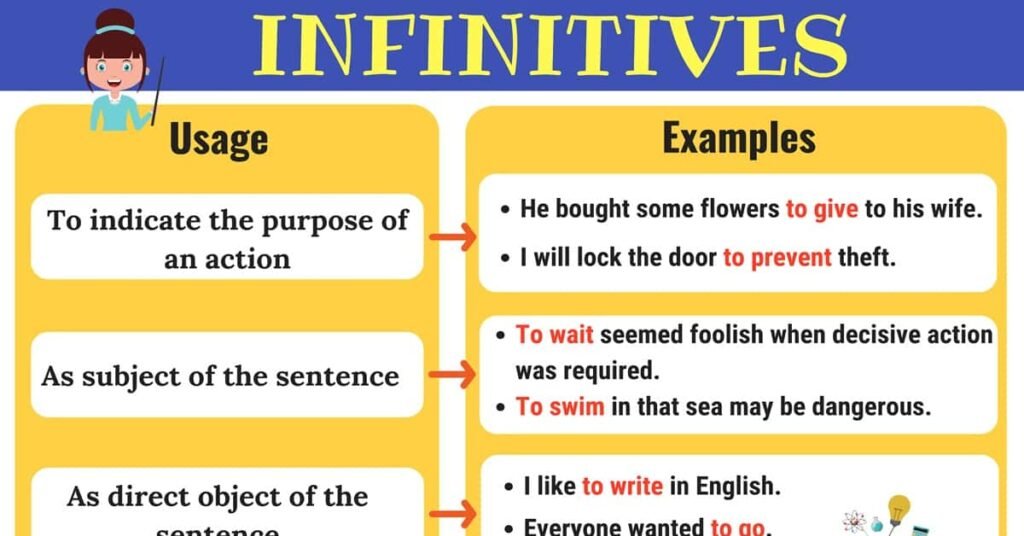what are Infinitives This is part of the polytechnic English course “English (65712)”. As the polytechnic and HSC, English 2nd Paper curriculum is similar, this class will be helpful for those who are preparing their Class 11 English 2nd paper and Class 12 English 2nd Paper. This class is also useful for contestants preparing for competitive exams like BCS Preparation, University Admission, Bank Jobs, etc.
what are Infinitives
Infinitives are a special form of verbs that can be used as a noun, adjective, or adverb. They are usually made by adding the word to before the base verb, and they can be useful when discussing actions without actually doing the action, such as “I want to go home,” or “To err is human.”
The infinitive form is crucial to English and many other languages, but the grammar rules for infinitives can be tricky. In this guide, we explain all about the different types of infinitives and how to use them, including clear infinitive examples so you can see how they work.

What is an infinitive, and what is its function?
Infinitives are a form of verb that allows the word or a group of words to be used as a noun, adjective, or adverb. Every type of verb can be put into the infinitive form, even phrasal verbs.
Usually, infinitives are formed by adding the word to before the base form of the verb, as in to be, but sometimes the base form of the verb is used alone (we explain more in the next section).
The purpose of infinitives is to discuss an action in general instead of a specific instance of the action being done. For example, take a look at these two sentences:
I need to win.
Today, we win.
The first sentence uses the infinitive form of the verb win as a noun; the main verb of the sentence is actually “need.” The second sentence uses the standard form of win as an actionable verb. In the first sentence with the infinitive, the action of “winning” is not actually done; the sentence simply discusses the idea of winning. The second sentence, however, describes the action of winning.

What are the types of infinitives?
There are two main types of infinitives: full infinitives and bare infinitives. Below, we explain when and how to use each.
Full infinitives
Full infinitives, also known as to-infinitives, are the most common infinitives in writing. You can create a full infinitive by taking the base form of a verb and adding to in front of it. For example, the verb be—which is often conjugated to is, are, was, were, etc.—becomes the full infinitive to be, as in Shakespeare’s famous infinitive example from Hamlet:
To be or not to be . . .
Bare infinitives
Bare infinitives, also known as zero infinitives, are formed without to—you simply use the base form of a verb within a sentence. As you can imagine, this gets confusing, but thankfully bare infinitives are less common than full infinitives.
How do you use an infinitive?
While we already covered the main uses for both infinitive forms, there is some infinitive grammar that we haven’t covered yet. Below, we explain three key areas for understanding infinitive grammar: split infinitives, passive infinitives, and continuous infinitives.

Details about infinitives – English Grammar :
